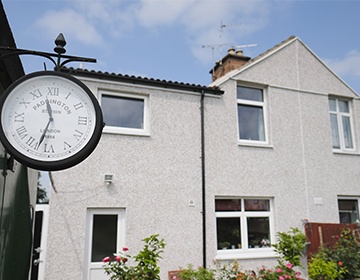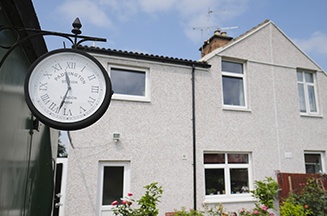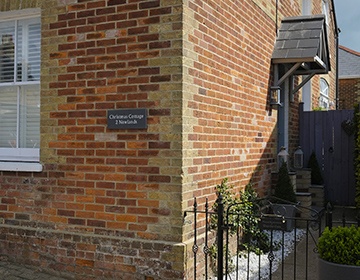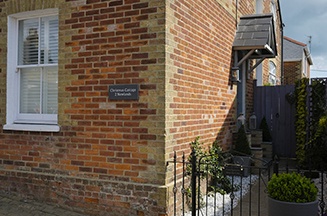You could save on your annual energy bills with home energy efficiency upgrades.
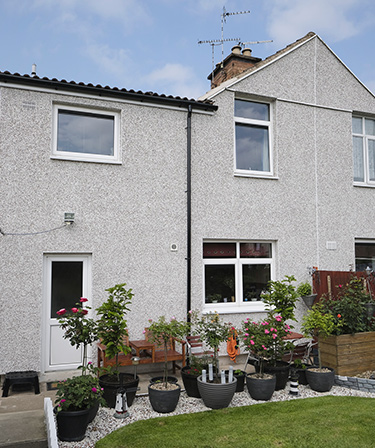

Social Housing Decarbonisation Fund
What is the Social Housing Decarbonisation Fund?
Benefits for you as a tenant
What is the cost of the SHDF scheme as a tenant?
Which homes are eligible for funding?
Your housing provider will have identified your property by reviewing the energy performance of your home. Selected tenants will be contacted directly by us if your home is in one of the 23 qualifying areas below to advise if your home has been identified and when your survey will take place.


Funding options
What energy efficiency upgrades can I get under SHDF?
What happens next?
Just right for the job
Our accredited installers meet all the safety requirements needed to install energy-efficient improvements for the Social Housing Decarbonisation Fund. We'll always let you know who is coming to your home to install your upgrades, and we only use TrustMark and MCS-registered installers, so you can relax, safe in the knowledge that any upgrades you’re eligible for will be installed by a professional. And our help doesn’t stop there, we offer aftercare on all our installations, so if you have a problem, just get in touch, and we’ll arrange for it to be fixed. All the information you need will be in your warranty documents.
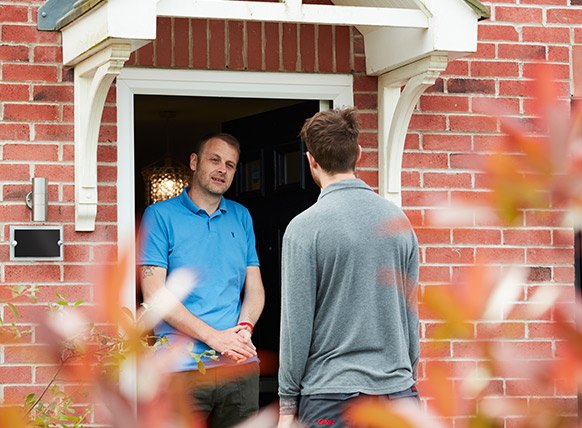

Explore more grants & schemes
What is the Social Housing Decarbonisation fund?
The social housing decarbonisation fund is a programme that aims to reduce the carbon footprint of social housing buildings. Decarbonisation means reducing the amount of carbon dioxide and other greenhouse gases that are produced.
The fund provides financial support to upgrade and improve the energy efficiency of social housing properties. This can include installing better insulation, upgrading heating systems, or using renewable energy sources like solar panels. These changes help to make the buildings more energy-efficient as well as providing tenants with cheaper homes to heat.
Who are E.ON?
E.ON Energy Solutions provides help and support to Local Authorities and Housing Associations across the country to develop and support large scale energy efficiency home improvement programmes, like this one is with housing providers.
We’ll be responsible for the journey you as the tenant will go on, including confirming eligibility, home surveys, to the installation of improvements in homes.
The other part of our company, which you may be more familiar with is E.ON Next, they provide gas and electricity to homes across the country. You don’t need to be an E.ON Next customer to benefit from this scheme.
Why are my housing provider and E.ON working together?
Your housing provider has chosen E.ON to be their delivery partner to guide tenants through the process, from booking a free survey right through to the final installation. We’ll be the ones you see and hear from regularly, keeping you up to date on the progress of your home’s work and answering any questions you may have.
Who will be there to support me?
Your Tenant Liaison Officer will be your key point of contact.
How long will I have to wait for the work to start once book my home survey?
Once your property is assessed and meets all the suitability requirements, the installation process should take between 3-6 weeks (weather permitting).
Do I have to pay anything?
No, your housing provider is fully funding it with the funding they've secured from the government. This means you don't need to pay a penny towards this work.
I’m not saving any money on my energy bills. Why?
To get the most out of your improvements, you’ll need to do things a bit differently. For example, you may find that you're opening windows that you never used to. Often, customers who have heating systems on a timer experience this after the insulation is fitted.
Because your property is better at retaining heat, the heating won’t need to be "topped up" as often, and you may actually find that you are too warm! We encourage customers to use a thermostat to control their heating.
How do I contact E.ON ?
There'll be a few different ways you can contact E.ON.
We'll have a dedicated site Manager and Tenant Liaison officer who'll be located onsite during the installation phase until it's complete.
Alternatively, you can get in touch with our Advice centre by calling 0333 202 4820.
Do I have to have the work carried out on my property?
Yes, your housing provider has identified your property is suitable for the home energy improvements, which will benefit you and your home.
My neighbour would also like insulation but they’re not included in the scheme. What can they do?
As part of this scheme, your housing provider has identified suitable properties.
If your neighbour hasn’t been included in this programme and has not received a letter confirming their inclusion, they can contact the Tenant Liaison Officer to understand why and if alternative options are available to them.
I have an existing issue with my home that my housing provider hasn't yet resolved. Why should I have this work done?
All unresolved issues with your home need to be managed and resolved by your Tenant Liaison Officer.
These free home improvement upgrades will improve the way you heat your home, as well as helping to reduce your energy bills, so please make sure your home doesn’t miss out.
How is my data used regarding the Social Housing Decarbonisation Fund?
You can find out all you need to know about how your data will be used if you're eligible for funding in the Privacy Notice for the Social Housing Decarbonisation Fund.
